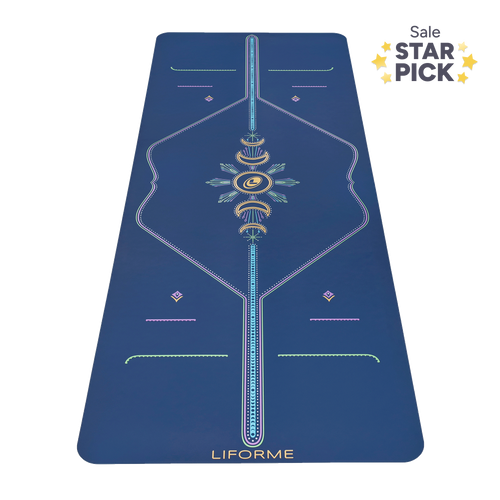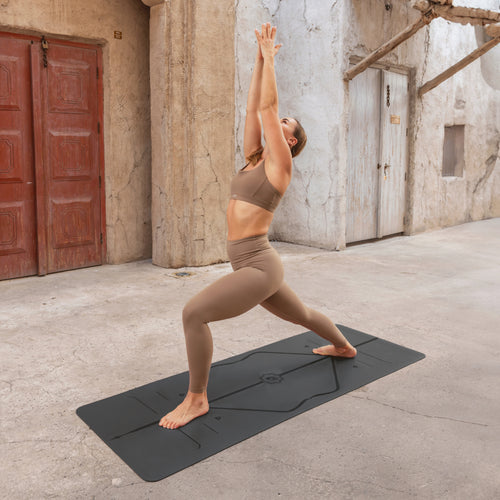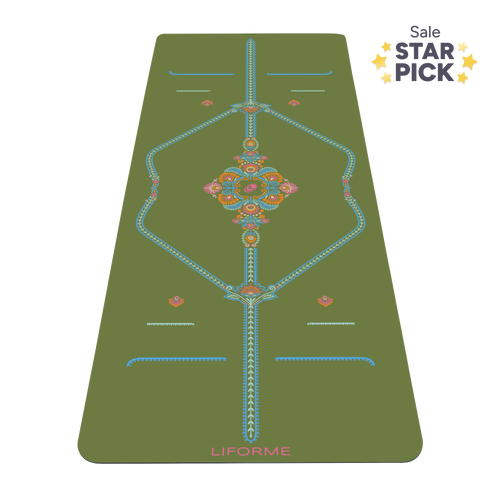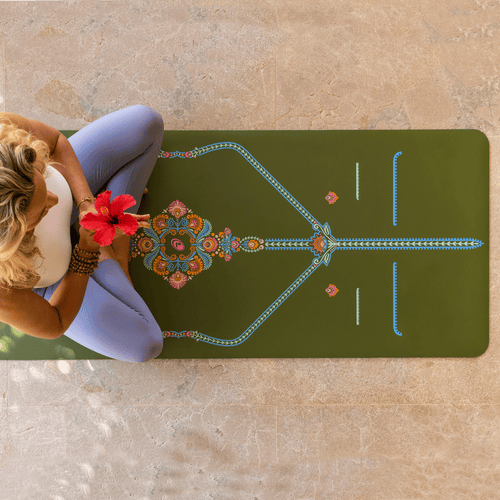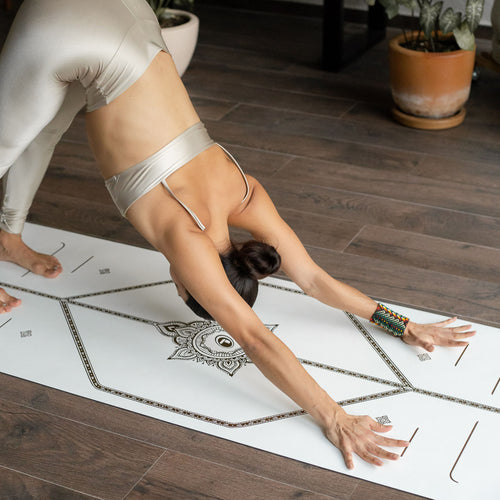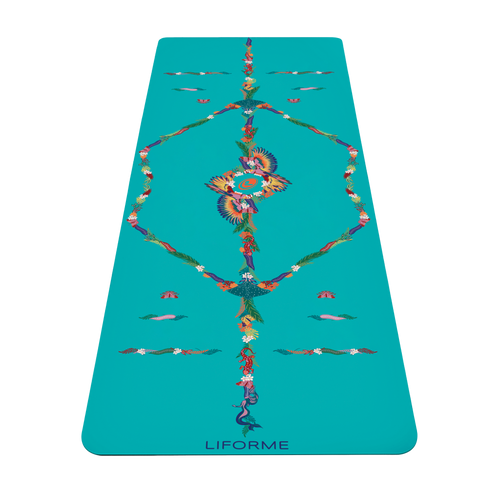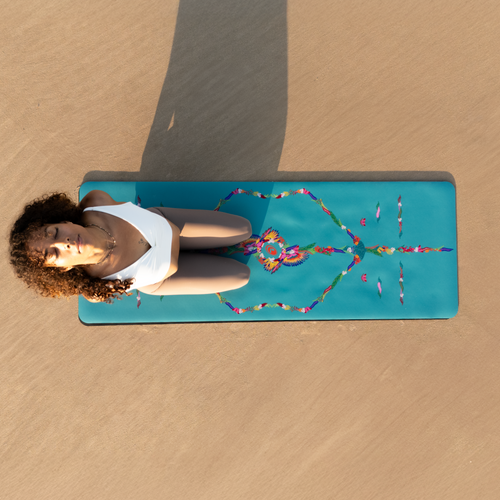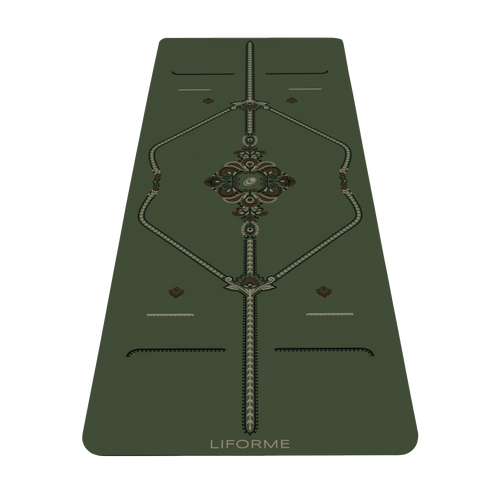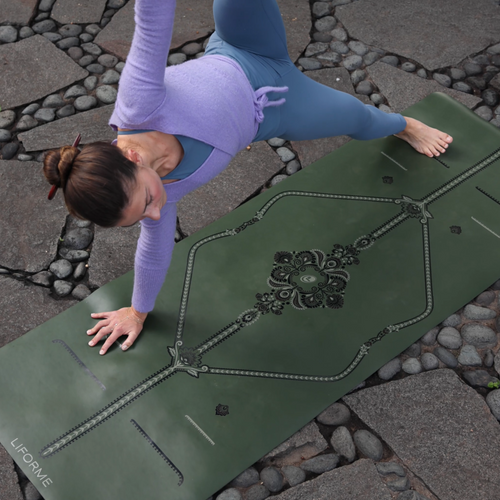Stand de l'avant-bras, également connu sous le nom de pose de pic de paon de pincha ou de paon à plumes, est un inversion du yoga dans lequel vos coudes, avant-bras et paumes sont vos seuls points de contact avec le sol.
La force du noyau et la mobilité des épaules requises en font une pose avancée de yoga. Cependant, il y a beaucoup d'arrêts aux stands le long de la route vers la pleine pose qui ont plusieurs des mêmes avantages.
Les supports de l'avant-bras peuvent se sentir impossibles ou sans effort, parfois le même jour. Notre guide approuvé par Yogi vous aidera à renforcer la force, la stabilité et la confiance dans la pose.
Nous couvrirons les instructions étape par étape, les conseils d'alignement, les erreurs courantes et les modifications adaptées aux débutants. Une fois que vous êtes à l'aise d'équilibrer sur vos avant-bras, il existe de nombreuses variations créatives qui gardent Pincha Mayurasana amusant et stimulant.
Instructions étape par étape pour le support de l'avant-bras
1. Commencer Pose de dauphin - Placez vos avant-bras sur le tapis et vos coudes à largeur d'épaule. Utiliser un Tampon de yoga Sous vos coudes s'ils sont sensibles.
2. Marchez vos pieds - Mettez vos pieds aussi près que possible de vos coudes. Plus vos hanches sont élevées, plus il est facile de soulever vos jambes.
3. Déplacer votre weight dans vos avant-bras - Faire avancer votre centre de gravité est la clé de l'équilibre.
4. Soulever une jambe - Soulevez vos orteils vers le plafond en gardant vos hanches carrées.
5. Poussez doucement du sol - Pliez votre genou debout pour l'élan et flottez les deux jambes.
6. Activez vos jambes - Une fois vos jambes en haut, atteignez les deux pieds.
7. Faites votre cœur - Évitez de globrer votre colonne vertébrale.
8. Tenir plusieurs respirations - puis abaisser une jambe à la fois avec le contrôle.
9. Essayez votre autre jambe - Après le repos, entraînez-vous d'abord de soulever votre autre jambe.
🧘♀Çons d'un yogi
"Plus que la force, plus que la flexibilité, la clé du déverrouillage de l'avant-bras (et d'autres poses avancées de yoga) est une pratique cohérente et indépendante. Ce n'est que lorsque j'ai commencé à travailler sur la position de l'avant-bras régulièrement en dehors de la classe que j'ai fait des progrès."
Bases du support de l'avant-bras
Sanskrit Signification: Pincement (Plume) Mayura (Paon) Asana (Pose)
Également connu sous le nom de: Pose de paon à plumes
Niveau de yoga: Avancé
Type de pose: Inversion
Muscles ciblés: Épaules, bras, noyau, dos
Contre-indications: Glaucome, blessures à l'épaule
Avantages du support de l'avant-bras (Pincha Mayurasana)
· Améliore la force et l'équilibre du cœur
· Renforce vos épaules et vos bras
· Augmente votre mobilité de l'épaule
· Efface votre esprit

Indices d'alignement clés pour un stand de l'avant-bras fort
1. Épaules sur les coudes
Certaines personnes préfèrent rassembler leurs mains au lieu de garder leurs avant-bras parallèles. C'est bien, mais assurez-vous que vos coudes restent juste sous vos épaules.
2. Hanches sur les épaules
Lorsque vous vous installez dans votre dauphin raccourci, plus vous pouvez obtenir vos hanches sur vos épaules, plus il sera facile de trouver de la stabilité lorsque vous soulevez vos jambes.
3. Soulevez votre tête
Ne laissez pas votre couronne tomber vers le sol. Gardez votre regard sur le sol entre vos mains.
4. Triquer vos côtes
Assembler vos côtes pour empêcher la largeur de votre colonne vertébrale
5. Activez vos jambes
Gardez vos jambes engagées par Tendre la main à travers vos orteils pour maintenir l'équilibre.
Conseils adaptés aux débutants pour la pose de yoga de stand avant-bras
· Travaillez votre dauphin - Dolphin Split (une jambe levée) est un endroit idéal pour renforcer la force et la flexibilité.
· Utiliser un mur - Apportez votre tapis sur un mur et venez dans Dolphin avec vos mains près du mur. Lorsque vous vous lancez, le mur vous attrapera. Lorsque les deux pieds sont sur le mur, votre colonne vertébrale sera légèrement inclinée vers le mur. Entraînez-vous à prendre une jambe à la fois loin du mur pour amener votre colonne vertébrale perpendiculaire au sol afin que vous puissiez équilibrer le support de l'avant-bras.
· Essayer les accessoires - Un bloc entre vos mains au mur et / ou une sangle autour de vos bras peut empêcher vos coudes d'éclairer et créer plus de stabilité dans le haut du corps.
· Faire demi-tour - Essayez un support avant en forme de L avec vos pieds sur le mur.
Variations du support de l'avant-bras

Division du support de l'avant-bras
Séparez vos jambes pour une variation divisée. Certaines personnes trouvent plus facile d'équilibrer ici qu'avec les jambes verticales.

Avant-bras met les jambes d'aigle
Une fois que vous êtes à l'aise, vous pouvez jouer avec n'importe quel nombre de variations de jambe, telles que Aigle jambes ou Lotus jambes.

Stand de l'avant-bras de creux
Bouffez votre poitrine vers l'avant et ramenez vos hanches pour une variation de creux. Vous pouvez également libérer votre tête et déplacer votre regard à l'arrière du tapis.
Poses préparatoires pour renforcer la force et la mobilité

Planche de l'avant-bras
Commencez votre voyage vers l'avant-bras ici en établissant l'alignement de vos épaules et de vos avant-bras et en renforçant la force de base.

Pose des dauphins (Ardha pincha mayurana)
Soulever vos hanches dans une pose de dauphin vous permet de vous habituer à en prendre plus weight dans vos avant-bras et vous diriger vers l'empilement de vos hanches sur vos épaules.

Headstand (Salamba sirsasana)
La tête de tête ressemble beaucoup à l'avant-bras, avec la stabilité supplémentaire d'avoir la tête sur le sol. La plupart des étudiants de yoga travaillent d'abord sur les têtes de tête, puis progressent vers l'avant-bras.
Counter Poses pour la récupération du support de l'avant-bras

Pose de l'enfant (balasana)
La pose de l'enfant est toujours un endroit agréable pour se reposer après un gros effort, et il étire vos épaules, votre dos et vos hanches.

Pliant en avant (Uttanasana)
Laissez la gravité libérer votre colonne vertébrale, votre cou et vos épaules.
Pourquoi nous pratiquons le stand de l'avant-bras (Pincha Mayurasana)
L'avant-bras est (Pincha Mayurasana), comme de nombreuses poses de yoga inversées, défie le corps d'une manière qui va au-delà des modèles de mouvement quotidiens. La pratique de cet équilibre avancé du bras au fil du temps améliore la proprioception, la conscience du corps et la confiance.
Parce qu'il exige un engagement physique complet et une concentration mentale, l'avant-bras est également un moyen puissant de calmer l'esprit et de développer une concentration. Comme pour de nombreuses inversions, il peut être à la fois énergisant et playful, En faire une pose enrichissante à explorer dans votre pratique de yoga.
Continuez comme ça!
Les poses de yoga avancées prennent du temps et de la cohérence. Ajoutez la préparation du stand de l'avant-bras à votre pratique régulière pour renforcer la force, la mobilité et la confiance pour ce post et bien d'autres. Même si la pose complète se sent loin, tout le travail que vous mettez sur votre tapis vous rapproche tout le temps.
FAQ
Quels sont les avantages de l'avant-bras (Pincha Mayurasana)?
Le support de l'avant-bras est bon pour renforcer votre cœur, étirer vos épaules et concentrer votre attention, entre autres avantages.
Les débutants peuvent-ils pratiquer le stand de l'avant-bras?
Cela dépend vraiment du type de force et de mobilité que vous avez lorsque vous commencez le yoga. Le support complet de l'avant-bras sera probablement beaucoup pour le débutant moyen, mais vous pouvez commencer à travailler sur des poses comme la planche de l'avant-bras et le dauphin qui vous y mènera.
Quand devrais-je éviter le stand de l'avant-bras?
Évitez cette pose (et toutes les inversions) si vous avez du glaucome. Des blessures à l'épaule antérieures peuvent également empêcher la pratique de cette pose, alors vérifiez auprès de votre fournisseur de soins de santé si cela s'applique à vous.
Dois-je utiliser un mur lors de l'apprentissage de l'avant-bras?
Le mur est un accessoire très utile à utiliser lorsque vous renforcez la force, trouvez votre équilibre et gagnez en confiance. Une fois que vous pouvez équilibrer avec les deux jambes hors du mur, commencez à vous entraîner à contrôler au centre de la pièce.
En quoi l'avant-bras est-il différent d'un Poignée?
Dans les mains, la paume de vos mains est votre seul point de contact avec le sol. Dans les supports de l'avant-bras, vos paumes, vos avant-bras et vos coudes sont au sol.






